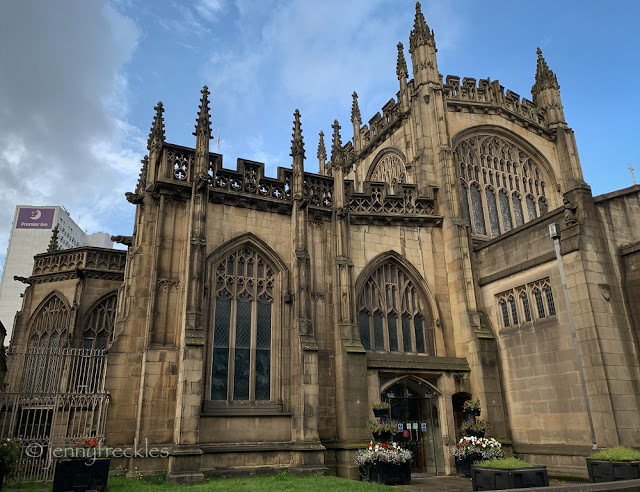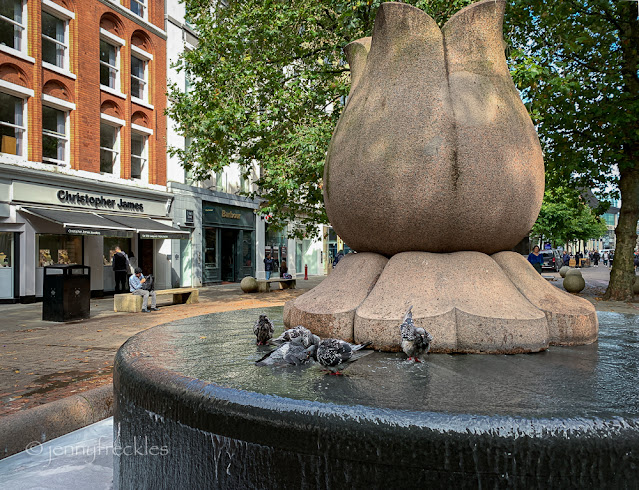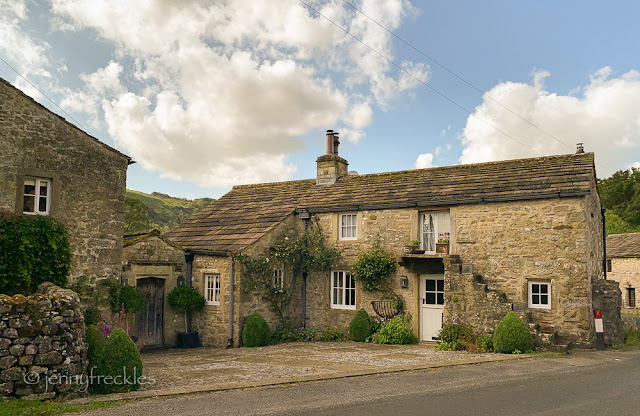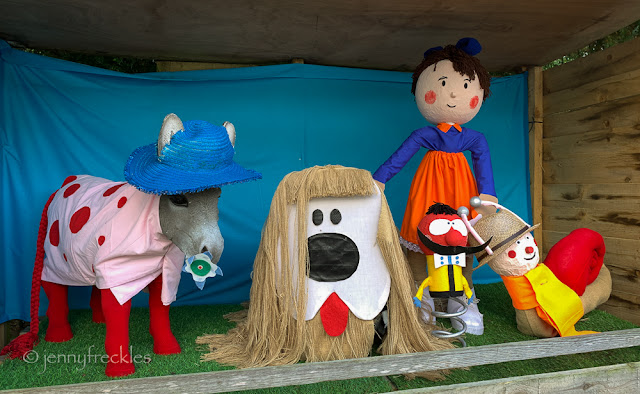There are some magical places that just have the power to 'bring us back to ourselves'. I'm sure you know what I mean. Places that tip an uncertain world back into balance, that soothe and refresh our souls, that provide the respite we need to regroup and go back into the maelstrom of life with a little more strength and equanimity. I count myself lucky to have several such places within easy reach, all involving trees and water. One of the best is the Bolton Abbey Estate, where a walk through the woods and along the River Wharfe nearly always restores me.
The woods are just beginning to acquire the patina of autumn. The bracken is turning russet, the trees have a slight hint of yellow and here and there a few bleached leaves shine out brightly like stars in a nightscape. A blue sky (a much brighter day than was forecast) dappled the river, which was rushing and swirling with strong currents, thanks to recent very heavy rain up in the Dales.
The infamous Strid gorge was fuller than I've seen it this summer, the rushing water almost filling the chasm, reputed to be as deep as the height of two double decker buses. This is said to be one of the deadliest places in the world; it looks fairly innocent but several people have drowned by slipping in or trying to leap across. The river is funnelled through a narrow strip at great speed and with strong undercurrents. The rocks have underwater overhangs, dangerous outcrops and caves. Anything sucked in would easily get trapped. Taking photos there means staying well back from the edge!
Once through the narrow bit, the river widens again. Here a trail of foam hints at the turmoil the water has just been though, enduring a churning as if in the drum of a great natural washing machine.



















































